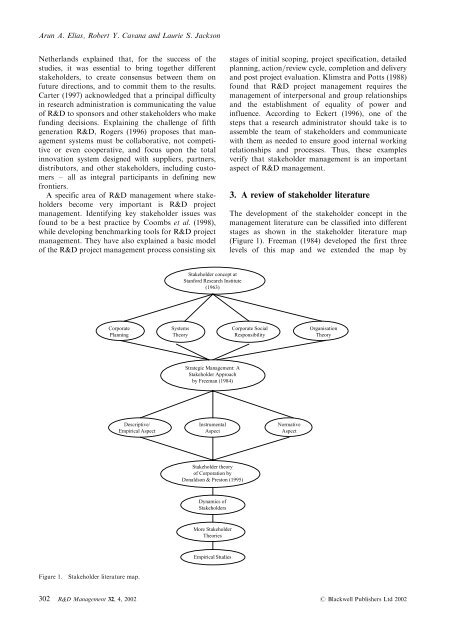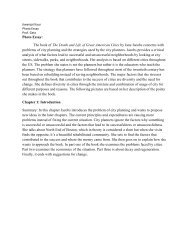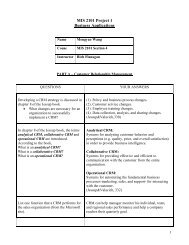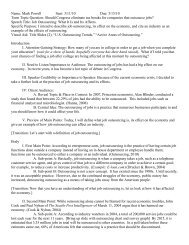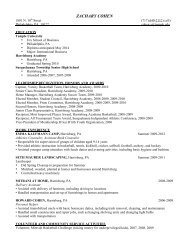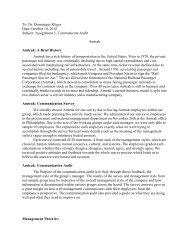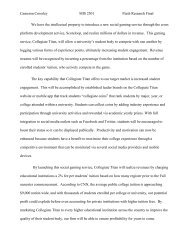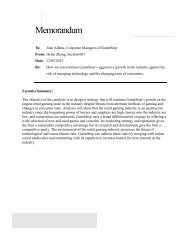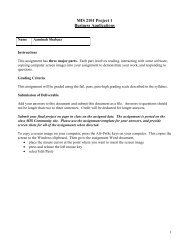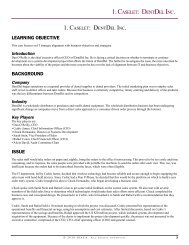Stakeholder analysis for R&D project management - Temple Fox MIS
Stakeholder analysis for R&D project management - Temple Fox MIS
Stakeholder analysis for R&D project management - Temple Fox MIS
You also want an ePaper? Increase the reach of your titles
YUMPU automatically turns print PDFs into web optimized ePapers that Google loves.
Arun A. Elias, Robert Y. Cavana and Laurie S. Jackson<br />
Netherlands explained that, <strong>for</strong> the success of the<br />
studies, it was essential to bring together different<br />
stakeholders, to create consensus between them on<br />
future directions, and to commit them to the results.<br />
Carter (1997) acknowledged that a principal difficulty<br />
in research administration is communicating the value<br />
of R&D to sponsors and other stakeholders who make<br />
funding decisions.Explaining the challenge of fifth<br />
generation R&D, Rogers (1996) proposes that <strong>management</strong><br />
systems must be collaborative, not competitive<br />
or even cooperative, and focus upon the total<br />
innovation system designed with suppliers, partners,<br />
distributors, and other stakeholders, including customers<br />
– all as integral participants in defining new<br />
frontiers.<br />
A specific area of R&D <strong>management</strong> where stakeholders<br />
become very important is R&D <strong>project</strong><br />
<strong>management</strong>.Identifying key stakeholder issues was<br />
found to be a best practice by Coombs et al.(1998),<br />
while developing benchmarking tools <strong>for</strong> R&D <strong>project</strong><br />
<strong>management</strong>.They have also explained a basic model<br />
of the R&D <strong>project</strong> <strong>management</strong> process consisting six<br />
stages of initial scoping, <strong>project</strong> specification, detailed<br />
planning, action=review cycle, completion and delivery<br />
and post <strong>project</strong> evaluation.Klimstra and Potts (1988)<br />
found that R&D <strong>project</strong> <strong>management</strong> requires the<br />
<strong>management</strong> of interpersonal and group relationships<br />
and the establishment of equality of power and<br />
influence.According to Eckert (1996), one of the<br />
steps that a research administrator should take is to<br />
assemble the team of stakeholders and communicate<br />
with them as needed to ensure good internal working<br />
relationships and processes.Thus, these examples<br />
verify that stakeholder <strong>management</strong> is an important<br />
aspect of R&D <strong>management</strong>.<br />
3. A review of stakeholder literature<br />
The development of the stakeholder concept in the<br />
<strong>management</strong> literature can be classified into different<br />
stages as shown in the stakeholder literature map<br />
(Figure 1).Freeman (1984) developed the first three<br />
levels of this map and we extended the map by<br />
<strong>Stakeholder</strong> concept at<br />
Stan<strong>for</strong>d Research Institute<br />
(1963)<br />
Corporate<br />
Planning<br />
Systems<br />
Theory<br />
Corporate Social<br />
Responsibility<br />
Organisation<br />
Theory<br />
Strategic Management: A<br />
<strong>Stakeholder</strong> Approach<br />
by Freeman (1984)<br />
Descriptive/<br />
Empirical Aspect<br />
Instrumental<br />
Aspect<br />
Normative<br />
Aspect<br />
<strong>Stakeholder</strong> theory<br />
of Corporation by<br />
Donaldson & Preston (1995)<br />
Dynamics of<br />
<strong>Stakeholder</strong>s<br />
More <strong>Stakeholder</strong><br />
Theories<br />
Empirical Studies<br />
Figure 1.<strong>Stakeholder</strong> literature map.<br />
302 R&D Management 32, 4, 2002 # Blackwell Publishers Ltd 2002


